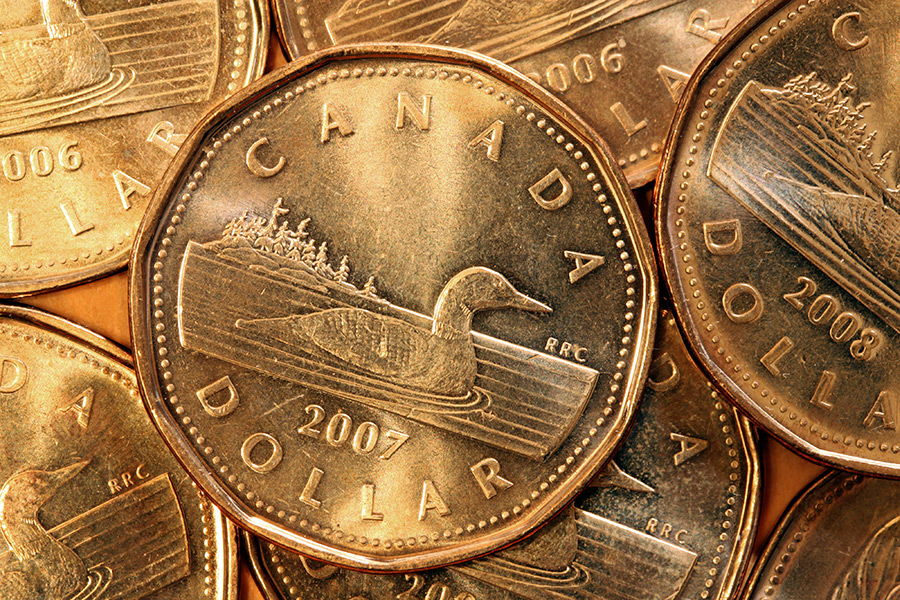In the past few years, ever since the recession dominated the Flathead Valley, it wasn’t unusual to see rows of cars and trucks with Alberta license plates in the Costco parking lots.
Lately, the Canadian license plates are still there, but they are less of an occurrence, as the Canadian dollar continues to weaken compared to the U.S. dollar.
As of Aug. 31, the U.S. dollar was worth $1.32 in Canadian currency, the strongest the American dollar has been in at least five years. And while that may prompt more American spending in Canada, in the Flathead Valley, it will likely mean less spending from our neighbors to the north.
“The Flathead is still going to get tourists and homeowners, it’s just a little bit less at the moment. (Canadians are) still coming down the same amount but not spending as much,” Donna Townley, an economist at the University of Lethbridge in Alberta, said.
It’s Newton’s third law of motion: for every action, there is an equal and opposite reaction. While the law is one of many governing the world of physics, it’s also an apt way to look at the recent plummeting of the Canadian dollar, as the U.S. dollar continues to surge.
The Canadian dollar is tied to the commodity market, unlike the U.S. greenback. So when oil prices began falling this summer, dipping below $40 a barrel for the first time since 2009, the Loonie followed suit.
Patrick Barkey, the director of the Bureau of Business and Economic Research at the University of Montana, said the drop in oil prices is the second gut-punch the Canadian dollar received, since the price for natural gas is also low.
“Oil is just the second shoe to drop there,” Barkey said.
And since the Canadian oil projects are in sands, and not in traditional shale, their projects can’t ramp up and down as quickly, he said.
“They have some really big bills that need to be paid and they’re selling into a terrible environment from a seller’s point of view, so it’s going to be pretty painful,” Barkey said.
Already, some of the oil companies in Canada are cutting back. In March, Schlumberger, one of the world’s largest oilfield services and equipment companies, closed its operations in Medicine Hat, Alberta.
And with the first New Democratic Party (NDP) premier in Alberta in four decades, portfolio managers and energy-industry analysts urged investors to steer clear of investments in oil sands developers and coal producers in Alberta, according to Bloomberg Business.
“Calgary is very, very nervous,” Townley said.
In the Flathead, that will likely lead to fewer shopping sprees from Canadian buyers, she said, because they’ll only search out the essentials for their trip. Restaurants will probably retain business, she said, but retail will suffer, if it hasn’t already.
At Costco, where Canadian customers make up 10 percent of the total sales, their absence has been noted. Warehouse manager Greg Gillingham said sales to Canadian customers are down about 30 percent since last December.
“It’s quite a bit of money,” Gillingham said. “It’s definitely affected us.”
Sales are still strong with locals and American tourists, he said, but it seems the Canadians are staying home and not crossing the border for high-ticket items. Townley said at this point, it’s not worth it for many Canadians to make the road trip to the Flathead just to buy goods.
“It certainly looks like there’s a little less wind in the sails of Canadian spending and activity in the U.S., particularly from western Canada,” Barkey, of the BBER, said.
Not only will it affect retail goods, Barkey said, but the construction and real estate industries might feel the sting of fewer Canadians buying or building second homes here.
Kalispell Chamber of Commerce president Joe Unterreiner said the recent waning of the Canadian dollar was part of many local businesses’ budget for 2015, since it wasn’t a surprise. And since currency exchange rates are cyclical, Unterreiner said the Flathead is a different valley than the last time the Loonie dipped.
“We’ve emerged as more of a regional trade center. We have a lot more retail offerings that make us more of a magnet,” Unterreiner said. “Plus, we’ve picked up more hotel space, (Whitefish Mountain Resort) has expanded, so there are some things in the cycle we’re in that will hopefully help offset the traditional waxing and waning.”
Townley noted that industries catering to Canadians in higher income brackets, such as medical tourism, won’t likely be affected as much, because those visitors have the cash to spend.
For the general tourist making less than $200,000 a year, though, the falling dollar hits harder.
Several factors still undetermined, such as the upcoming Canadian elections and the U.S. Federal Reserve decisions on potentially increasing interest rates in September, will affect the currency in both nations. If the Canadian currency continues to fall, Townley said, investors will sell their Loonies and buy U.S. dollars. And as oil prices continue to fall, speculators go back to the “safe haven” of the greenback, she said.
“We have no control,” Townley said. “Those speculators dominate the market.”
Barkey said he expects the effects of the low oil prices to hit in North Dakota and eastern Montana as well, considering that oil producers there locked in prices when they were still high.
“There’s been a delay before many of them saw the full brunt of the price declines,” Barkey said. “It’s just a delay though.”
With many factors still in play, such as the market unrest in China and Europe, Townley said oil futures and currency rates would likely see continuing changes in coming months.
“The biggest thing is we’ve just got to ride out the storm,” Townley said. “The Canadians are still going to come but in fewer amounts now. There’s still a commitment to this valley, they’re just not coming as much right now.”
